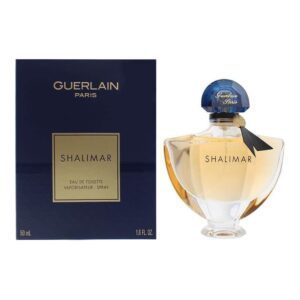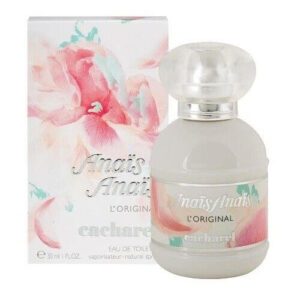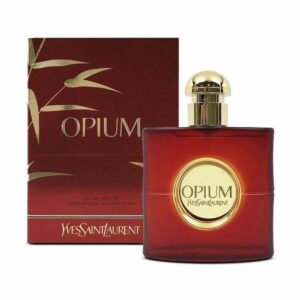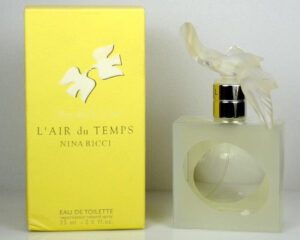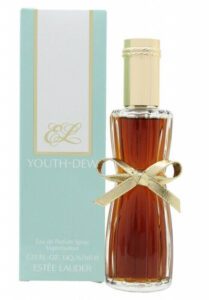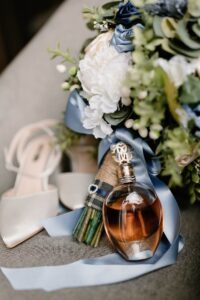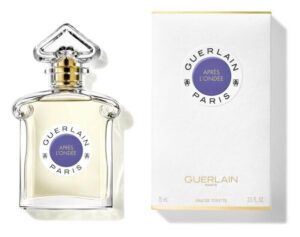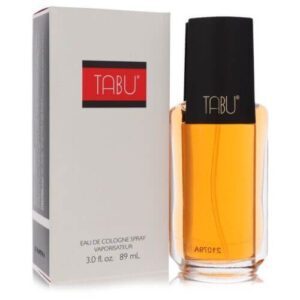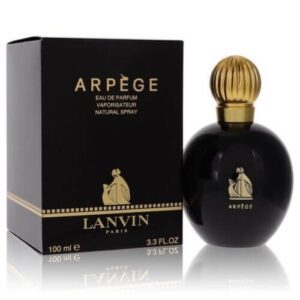-
Perfume Trends For 2024
Let’s talk about a subject that taps into our senses and emotions: perfume trends for 2024. We will discover how these trends reflect our collective tastes and times. From botanical bursts to synthetic wonders, each year brings a new wave of olfactory experiences.
Staying in step with these trends isn’t just about staying current; it’s about understanding the unique blend of artistry, technology, and market dynamics that influence what scents we’ll be drawn to. The world of fragrance is deeply interconnected with global events and cultural shifts, shaping our social language through scent.
Why might you be interested in what’s spritzing up for 2024? Whether you are a connoisseur or enjoy a pleasant aroma, keeping a finger on the pulse of perfume trends can offer fascinating insights. This keen understanding makes us question why we instinctively follow these trends and how they come to be.
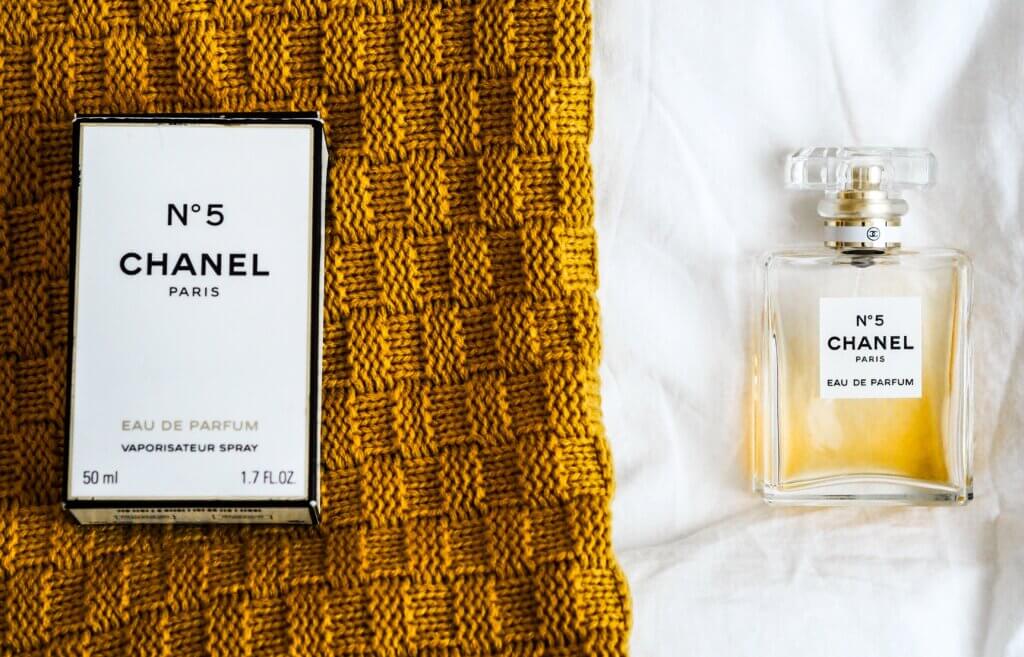
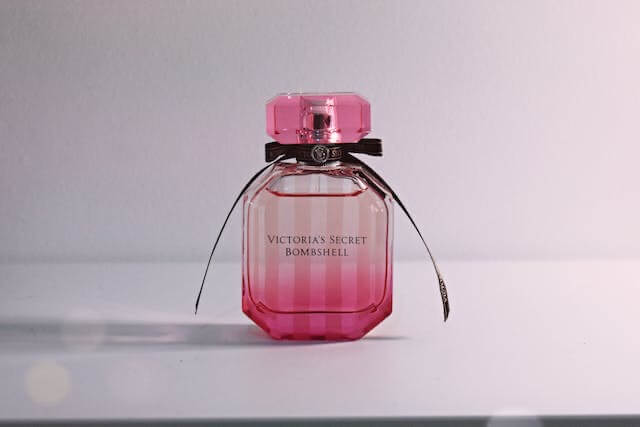
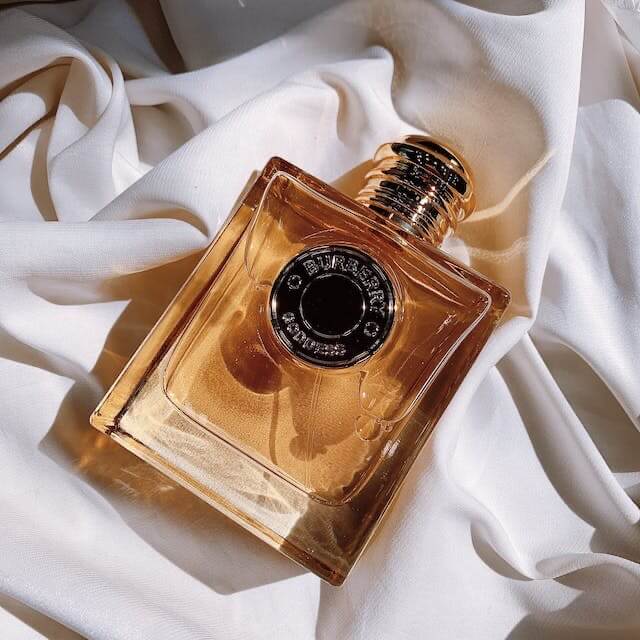
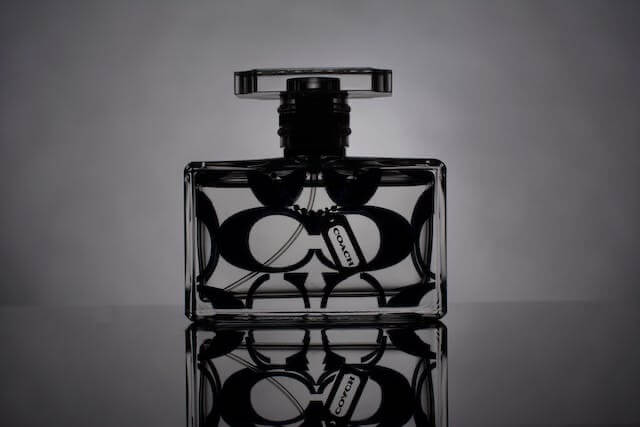
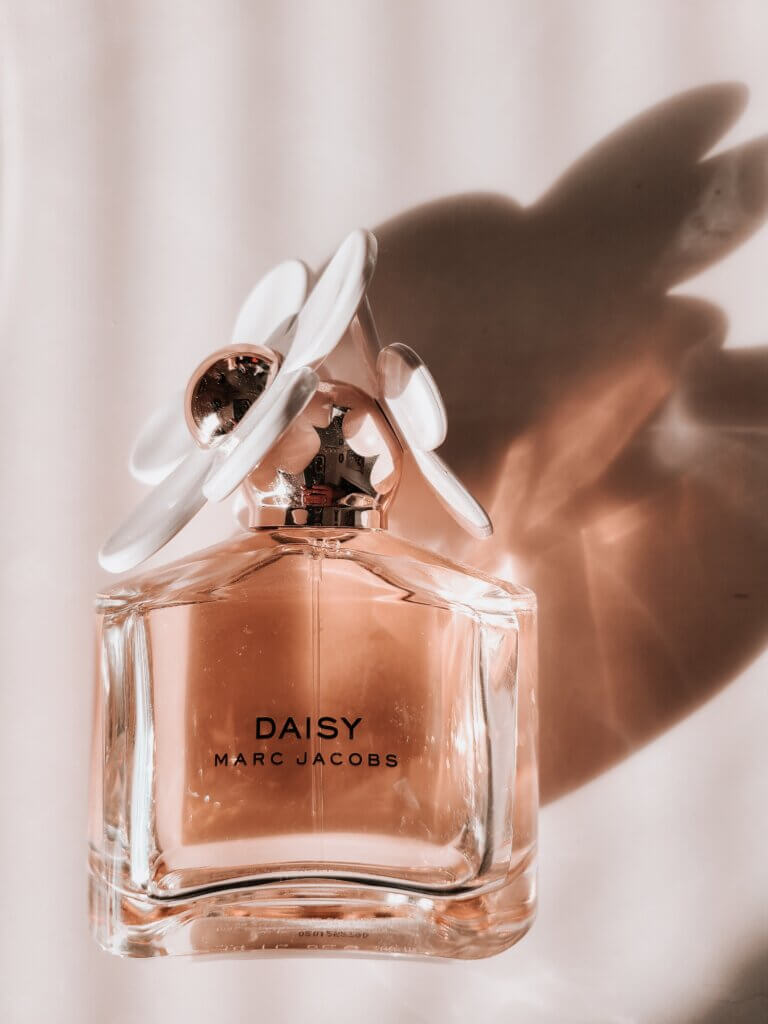
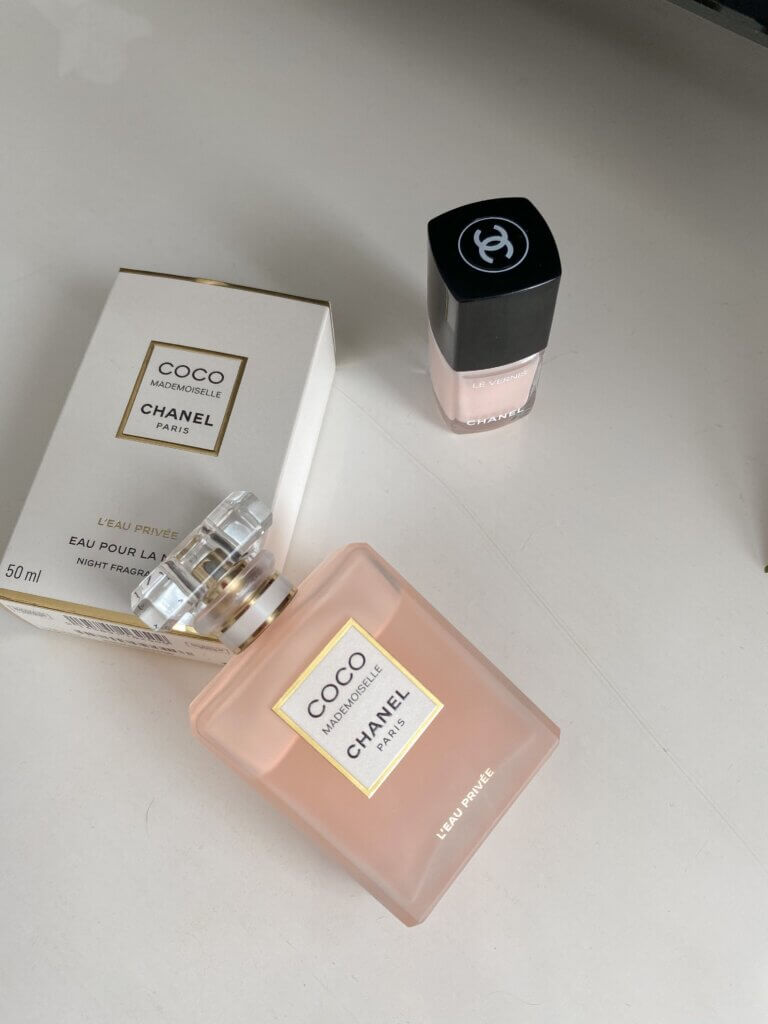
Discovering the Essence: Why We Chase the Latest Fragrance Trends
I’m going to delve into something fascinating here. Have you ever wondered why we gravitate toward the latest scent trends with such enthusiasm? It isn’t just about smelling nice; it’s about something more profound. The reasons are as complex as the fragrances themselves.
Affiliate DisclosureWhen you click on links to various merchants on this site and make a purchase, this can result in this site earning a commission. Affiliate programs and affiliations include, but are not limited to, the eBay partner network.Coco Mademoiselle For Women Eau de Parfum Spray 100 ml
It’s about the psychology behind our decisions. People have an innate desire to feel connected, and following trends is one decisive way to achieve that. Choosing a perfume in vogue can give us a sense of belonging, as if we’re part of a more significant, stylish movement that transcends individual tastes.
But there’s more to it than just fitting in. Our choice of perfume is a personal signature, a way to express our identity. Just as we update our wardrobe to reflect our evolving style, updating our scent wardrobe keeps our olfactory identity fresh and relevant in a rapidly changing world.
Those trends also encourage a sense of discovery and novelty, which I think we all crave. Trying out new perfumes becomes an adventure, a chance to explore unknown olfactory territories without leaving the comfort zone of a trending consensus.
Don’t worry too much about following the crowd. It’s perfectly fine to be selective. Choose something that resonates with you, even if it’s a trending scent. Ultimately, the fragrance you wear should be an extension of who you are.
Daisy Marc Jacobs 1.7 oz EDT Spray For Women
The Scent Architects: Who is Behind the Creation of Perfume Trends?
I will pull back the curtain on the mysterious figures who shape the world’s smell. In the perfume industry, masterminds, known as ‘noses,’ often work behind the scenes to create aromatic masterpieces that set the stage for global trends.
These scent architects are a blend of artists and scientists. They meticulously craft each fragrance note to evoke specific emotions and environments. They draw inspiration from a vast palette of ingredients, from exotic flowers to synthetic molecules designed to replicate the scent of rain.
In addition to skilled perfumers, major fashion houses and luxury brands dictate trends. When a high-fashion brand releases a new perfume, it comes with the brand’s prestige, often shaping consumer preferences before the first spritz ever touches the skin.
Celebrity endorsements are another influential factor. The allure of a celebrity’s lifestyle can make their signature scents wildly popular, and the collaborations between celebrities and seasoned perfumers can also usher in new trends.
Then there’s the rise of niche perfumeries, the craft brewers of the olfactory world. They’ve been disrupting the market with unique and bold scents, appealing to those looking for something outside the mainstream – and sometimes, the mainstream follows suit.
Unlike blockbuster scents, these boutique players often use rarer ingredients and more complex compositions, which can lead to a cult following and, eventually, wider market adoption.
Amid this intricate web of influencers, one thing remains consistent: a blend of creativity, market insight, and, sometimes, sheer luck that propels a scent to trendsetter status.
Tom Ford Lost Cherry Eau De Parfum 30 ml
Navigating the Aromatic Currents: To Follow or Not to Follow Trends
In the fragrance world, adopting the latest trends isn’t always straightforward. It’s like choosing a new hat—you want one that fits well and reflects your style, not just what’s grabbing headlines.
Diving headfirst into trendy scents can be thrilling; it’s a way to reinvent your olfactory signature and keep your scent wardrobe fresh. But hang on, it’s not just about hopping on the trend train. There’s something to be said for sticking with what works for you.
The classics, those time-tested favourites, have staying power for a reason. They’re dependable and often evolve into an olfactory comfort blanket, invoking memories and reaffirming our sense of self. One could argue that your scent—the one that’s ‘you’—outweighs the fleeting appeal of the latest fad.
Still, don’t let that deter you from exploring. Trends can serve as a guide, a window into what’s new and exciting. They can be a source of inspiration, even if you don’t adopt them wholesale. Think of them as a scent library to browse, not a mandate to change your entire perfume collection.
As we flow into the next section, consider this: the balance between embracing new trends and staying true to your essence is a dynamic dance. Understanding the lucrative business behind these aromatic trends sheds light on why certain scents are popular. It’s a mix of artistry, marketing sophistication, and, quite frankly, a keen sense of what can make an industry thrive.
The Alluring Business of Scents: Understanding the Perfume Industry’s Success
I will tell you why the perfume industry isn’t just surviving; it’s thriving massively. You’ll learn about the innovative strategies that make this market one of the most lucrative.
Now, what is a significant driver of this success? Sure, it’s about the luxurious bottles and the enchanting scents, but it’s also about the brilliant economics behind it. High-profit margins are a reality here; a little liquid costs a lot because it’s not just the product but the story it sells that matters.
In my opinion, the real game-changer has been scent marketing. You feel a little happier when you pass a store that smells like fresh linen or warm cookies. Brands understand and leverage our olfactory connection to the maximum, generating emotional ties and increased sales.
Don’t worry too much about the industry becoming stagnant, either. Companies can innovate their branding, target niche markets, or create new scent categories.
Choose something that resonates with you; chances are, the industry is already tapping into that appeal with tailored marketing and personalized experiences. Customization isn’t just a trend; it’s a strategy that perfume companies use to ensure the customer feels unique. And guess what? They are.
It blew me away in terms of the quality of these marketing approaches. By telling a unique story and appealing to our desire to express individuality, the industry is not just selling perfumes but a piece of an aspirational lifestyle, making it incredibly successful.
Beyond the Bottle: The Emotional Journey with Perfumes
Perfumes do far more than make us smell good. They can evoke memories, transport us to different places, and even change our moods. Let’s explore the deep emotional connections we often forge with our favourite scents.
Every fragrance tells a story. You might recognize a hint of jasmine that reminds you of a family member’s garden or a whiff of tobacco that evokes images of your grandfather’s study. Perfumes are unique in our personal life narratives, intertwining with significant daily moments.
Moreover, there is emerging interest in the therapeutic potential of fragrance. Beyond the aesthetic appeal, perfumes are being acknowledged for their ability to boost well-being. The concept of ‘aromachology’ examines the effects of scent on the human psyche, suggesting new possibilities for perfumes as mood enhancers and stress relievers.
Barakat Rouge 540 Fragrance | Eau De Parfum
Conclusion
Trends and economics do not just drive the world of perfumes; it is deeply rooted in the emotional and experiential. As we continue to embrace new fragrances, we add to our collection of scents and our reservoir of emotions and memories. And who knows? The most cherished perfume memories of tomorrow could well be influenced by the trends of 2024.
Join our community of fragrance lovers and stay in the loop with the most enchanting aromas. Enter your email address and be prepared to receive a burst of olfactory delight in your inbox!
Love Writing Blogs? Turn Your Passion into Profit!
If you enjoy sharing your thoughts through blogging, why not make it a business? By joining Wealthy Affiliate, you’ll get access to tools, training, and a supportive community to help you build and grow your website. Whether you’re a beginner or a seasoned writer, Wealthy Affiliate makes it easy to turn your words into income.
Click the box to start your blogging journey today!
-
Vintage Perfumes For Women
There are so many perfumes on the market today; we have been using them for many years. Let’s take a look at ten vintage perfumes for women. Perfume dates back to 1371, when we saw the first modern alcohol-based fragrance for Queen Elizabeth of Hungary.
There are many collectors of vintage perfumes; this is another one and the world’s most expensive perfume to add to the collection.
Those who collect such fragrances find how scents have changed over the years intriguing.
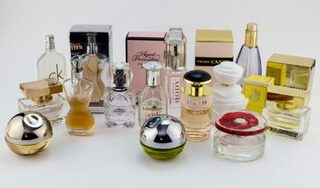
Vintage perfumes are still popular today. They will also know that some ingredients, such as oakmoss, a species of lichen used in various fragrances, have been restricted in recent years.
Some have been banned as they are no longer considered safe in perfumes, so other fragrance notes have been sourced instead.
If you have a collection of vintage perfumes in your wardrobe, keep hold of them. Perfumes dating back to the 1950s such as the iconic bottle of Chanel No.5 are well worth keeping. Perfumes dating before 2000 and familiar brands are still worth keeping as they can be sold and money can be made from them.
We all have memories created by the perfume we used to wear. Some may still wear the same scent today, especially if it’s their signature fragrance.
Such perfumes bring special events to life, including happy and sad memories, and some lots are still on the market today to keep those memories alive. Some may see vintage perfumes as something our Nan used to wear—that strong and overpowering scent that lingers for hours and in every room. Many are delicate but unforgettable fragrances.
Vintage perfumes for women
1. Shalimar By Guerlain
The oldest perfume and an oriental fragrance was created in 1925 by the perfume house Guerlain, called Shalimar. It is named after the Garden of Shalimar and its history of being created by Emperor Shah Jahan for his wife Mumtaz Mahal as a romantic gesture.
Its scent is still sold today and has fragrance notes of rose, tonka bean, jasmine and bergamot.
With base notes of musk, vanilla, and sandalwood, this bottle contains a beautiful combination of strong and elegant fragrance notes.
2. Anais Anais L’original By Cacharel
Launched back in 1978 and named after Anaitis, the ‘Goddess Of Love‘, this fragrance is still trendy today and was the first fragrance produced by Cacharel.
It was a fragrance created to attract teenagers with its floral and youthful scent.
Fragrance notes of sandalwood, honeysuckle, orange blossom, lavender, lemon and bergamot certainly caught the younger generation’s attention. With its floral, pretty bottle, most teenagers owned a bottle of this distinctive scent.
3. Opium By Yves Saint Laurent
There won’t be many who haven’t heard of Opium. Launched in 1977 and created by Jean Amic and Jean-Louis Sieuzac, this perfume has strong oriental notes and a distinctive fragrance. With top notes of plum, cloves, pepper, jasmine, coriander, bergamot, citrus, and West Indian bay, this spicy perfume should be worn with minimal application.
Added to the fact that this bottle is very distinctive, it’s possibly one of those perfumes that will go down in history. Nowadays, we also see Black Opium on the market.
With notes of pear, pink pepper, orange blossom, vanilla, patchouli, cedar, and cashmere wood, it’s just as powerful as the original. If you like potent scents that make a statement and can carry off such an iconic scent, take a look on Amazon.
4. L’air Du Temps By Nina Ricci
We rarely hear of Nina Ricci’s perfumes, but they are one of the most popular of the 20th century, alongside Chanel No. 5.
Launched in 1948, this floral/ spicy perfume with its unique glass dove cap contains stunning jasmine, rose, sandalwood and amber notes to capture the sense of being ‘free‘.
It was created in the wake of World War II by the French perfumer Francis Fabron in collaboration with Nina Ricci. Roughly translated from French, it means ‘the trend we have now/something in the air’. With its brightly coloured box and elegant bottle, it does suggest summer, blue skies, and open spaces.
5. Youth Dew By Estée Lauder
This fragrance, created in 1953, started as a bath oil. Women felt confident using it every day, and so it soon became a popular product as a fragrance.
In the 1905s, perfume was only bought as a gift from a husband or partner and not by women. Estée Lauder created this elegant bottled fragrance, and women soon fell in love with its spicy, amber, rich floral, and woody notes.
As men loved its scent, it became one of the sexiest fragrances ever created and still captures the hearts of many women today. Women will have heard and used the cosmetics we see in-store and online today, made by Estée Lauder, and Youth Dew is the first fragrance she created.
It’s a true classic. If you’re a lover of rose, lavender, jasmine, spices, and patchouli notes, take a look at eBay.
6. Mitsouko By Guerlain
This is another vintage perfume by Guerlain, and on first impression, this bottle looks a little masculine. Launched in 1919, Mitsouko captures this bottle’s chypre and fruity fragrance family. It also has a combination of beautiful notes.
With jasmine, rose, cinnamon, amber, peach, lilac, oak moss and bergamot, this fragrance was inspired by the story of impossible love between Mitsouko and a British officer. With such a combination of scents, it’s not your average daytime perfume, but it has heavy base notes of amber, oak moss, and cinnamon. It’s not the cheapest fragrance on the market either, but it’s well worth trying if you get the chance, purely for such beautiful fragrance notes.
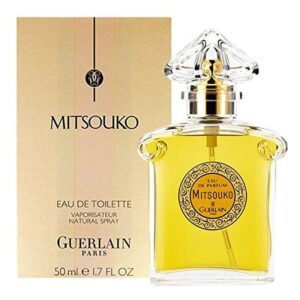
7. L’Heure Bleue By Guerlain
Another fragrance created by Guerlain, this one was launched in 1912 and contains beautiful notes of coriander, bergamot, violet, cloves ylang-ylang, jasmine, orchid vanilla, Sandalwood, musk, and tonka bean. In its distinctive bottle, it is classed as one of Guerlains’s best classic fragrances. According to Vogue, it is a symbol of royalty, as it is one of the Queen’s favourite scents, alongside Floris, white rose EDT.
8. Apres L’Ondee By Guerlain
Jacques Guerlain created this perfume in 1906, with its combination of violet, orange blossom, and spicy Anais notes. Apres L’onee (April shower) is a springtime fragrance after a rain shower.
This scent captures the freshness that reaches our noses as the rain hits the countryside, and then the sun comes out to warm the scent of the wet leaves again. Guerlain showcases many perfume fragrances and has a history of being one of the world’s most incredible perfume houses.
9. Tabu By Dana
Tabu was created by the French perfumer Jean Carles and launched in 1932 by a company also associated with Nina Ricci and Christian Dior.
It’s not the most elegant bottle for a female perfume, with a simple design, an almost ‘old’ and ‘heavy’ appearance, and a dark bottle, but its fragrance notes make up for it.
A mixture of patchouli ( and a high dose at 10% ) combined with clove, bergamot, orange, Coriander, rose, ylang-ylang, Sandalwood, musk and amber gives us a heavy oriental scent and one of the world’s first most robust.
10. Arpege By Lanvin
This fragrance, named after the musical term ‘arpeggio,’ was released in 1927 and is a classic among some of the world’s most famous perfumes. Similar to Chanel N0.5, Arpege is very much a flower perfume. It contains peach, orange blossom, honeysuckle, iris, rose, vanilla, musk, geranium, Sandalwood, patchouli, and vetiver. It is quite a simplistic bottle with a black base and gold cap. Paul Vacher and Andre Fraysse created it.
Do you own a vintage perfume? I’d love to hear which one you have! If you have any inquiries about finding the right scent, drop your comment below.
Look at our perfume and beauty resources page if you prefer more recent fragrances.
Unlock a world of inspiration, knowledge, and exclusive updates by subscribing to our newsletter!
-
How Is Perfume Made?
Millions of us, both men and women and even children, love to wear perfume, but how is perfume made? Whether for a night out, just to wear when meeting a friend for coffee, or a day in the office, perfumes are a hugely popular product and have been around for thousands of years.
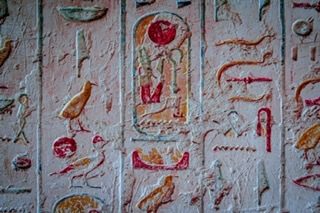
Cleopatra was a well-known perfume wearer from ancient history Wearing perfume can have many benefits, such as lifting our mood, complimenting an outfit, or grabbing the attention of the secret admirer. It’s become part of our everyday wear, and we have lots to choose from with so many on the market today.
We have already covered how to store perfume correctly and how to use perfume to get the most out of your scent, but what about where perfume comes from?
The history of perfume dates back to ancient times, as far back as 3,000 BC. The Greeks first created perfumes in the same way they are created today.
The creation of perfume
Many raw materials are required before the manufacturing process starts. Ingredients such as spices, leaves, fruits, resins, and flowers are all used during the first stages of creating a perfume.

Spices 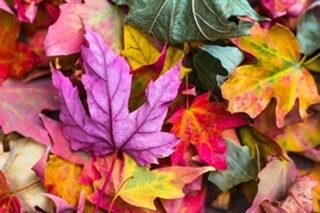
Leaves 
Fruits 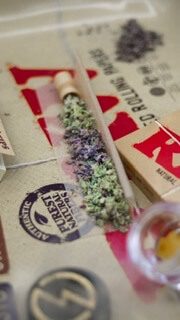
Resins It will be challenging to create a perfume without floral essences without adding flowers. Most perfumes are based around floral scents, which are essential ingredients. When we think of fragrances like Chanel, we think of their perfumes made from their flower fields.
This is to ensure they have enough product to create their perfumes. Chanel is the largest fashion brand in the world, and Chanel No. 5 is an iconic perfume.
Animal products, such as musk and ambergris, can also be present in perfumes. Musk is very commonly used as a base note in perfumes, and it is secreted from animals such as the musk deer.

The musk deer 
The sperm whale Incredibly, ambergris is produced in the digestive system of sperm whales, which means that whale poo is used in perfumes. The smell matures, and as it ages, it develops into a beautiful scent that, once diluted with alcohol, is used in perfumery.
It’s not always easy to obtain perfume scents from nature, so synthetic chemicals are sometimes used instead.
Nowadays, we have a world of cruelty-free perfumes, so using synthetic chemicals can save the lives of animals that are killed for the oils used to make perfumes. Many perfume companies, such as FM WORLD, are cruelty-free.
How the oil is extracted for making perfume
Oil is first extracted from flowers and plant material to create fragrances. One way to extract oil from plants is by expression. The plants are squeezed until the oil is released, like squeezing the juice out of an orange or a lemon. Another method for boiling plant parts is to steam the plants to extract the oils. This process is known as steam distillation.
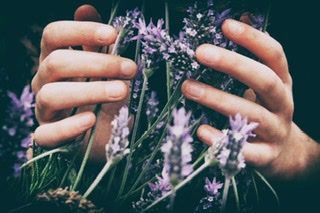
Another method involves dissolving plant parts in benzene and then exposing them to ethyl alcohol. The alcohol is then burned off so that the perfume oil remains and can be used.
Are you curious as to why perfume is so expensive?
When oil from around 660 roses is taken to create a 15ml bottle of French perfume, it’s no surprise why fragrances cost a lot of money.
Along with the celebrity endorsers, fancy packaging and sales assistance, it’s easy to see how a small bottle of perfume can end up with a hefty price tag.
Relevant post: The cost of perfume
How the experts create a perfume scent
It’s not a quick process when it comes to creating perfumes. It can take many years, and many ingredients before the experts reach the desired scent and formula. Of course, the result is a genuine perfume that we can wear for around two years and be complimented by others.
The experts must take time, extensive testing, and mixing to create the perfect scent.
Once the formula is created, the extracted oils are blended. When the experts have reached their desired scent, they mix alcohol to dilute the ingredients.
The stronger the perfume, the more alcohol is added to the mixture. Cologne, for example, contains the most alcohol.
When you purchase an eau de toilette, it will contain less alcohol than cologne. If you are buying a perfume, it will have the least amount of alcohol and, therefore, the most potent scent.
Perfume contains around 40% of essential oils, and cologne contains around 10%.
Affiliate Disclosure
This page contains affiliate links. Should you click on a link and make a purchase, I may receive compensation.
What happens after the oil and scents have been added
Once the oils have been extracted from the plants and blended in with alcohol, the mixture is ready for ageing. The perfume is set in a dark, cool room to do this. It will then stay there for several months without being disturbed or touched.
Whilst the perfume has been left, this will help to bind the oils and the alcohol together. Quite commonly, the smell will be more pungent after the ageing process. Adjustments to the blending can take place at this time.
When you see a bottle of perfume in a department store, getting there has been a long process. It will have been thoroughly tested to ensure the scent is perfect and how it should be before it is allowed to go on sale to the public.
So the next time you purchase a bottle of your favourite perfume, remember just how long it’s taken to get onto the shelves and in your possession.
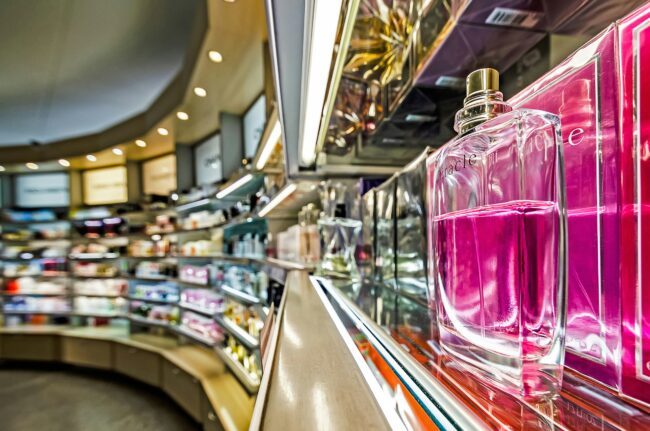
Perfume stores Do you have a favourite scent? Do you wear a different one every day to match your mood? Let us know in the comments below.
-
Chanel No. 5 Perfume History
Chanel No.5 perfume boasts an iconic and fascinating history. Whenever we mention Chanel No.5, most women—and many men—immediately recognise this famous fragrance. We naturally associate it with class and timeless appeal, maintaining its incredible popularity since its creation.
With fragrance notes belonging to the floral perfume family group, including fruity, oriental, aldehydic, citrus, and woody notes, it captured the hearts of women, not just for its iconic name.
So, where does the history of Chanel No. 5 perfume begin? Chanel No. 5 is a classic perfume created in 1920.
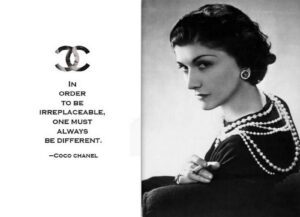
The iconic Coco Chanel The Birth of a Legend: Coco Chanel’s Journey to Create an Iconic Fragrance
The story begins with Coco Chanel, a remarkably clever French businesswoman. She was the darling of the Parisian social elite and set out to create a fragrance to revolutionise women’s smell.
By the early 1920s, Chanel had already become a phenomenon in the French fashion scene. She envisioned her style and projected this image to women worldwide. By 1921, she had established successful boutiques in Paris, Deauville, and Biarritz, and her success only continued to grow.
She even owned a villa in southern France and drove her blue Rolls Royce—a classic car for a classic lady and her creation. With her ongoing success, she now aspired to create a fragrance that would match the essence of the new, modern women she epitomised.
Unfortunately, Chanel’s background was quite complex and marked by challenges, and this complexity found its way into her signature fragrance.
Affiliate Disclosure
This page contains affiliate links. Should you click on a link and make a purchase, I may receive compensation.
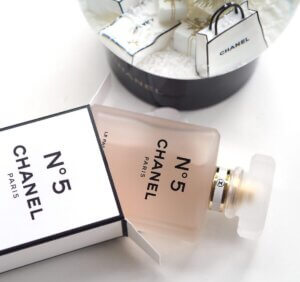
An iconic creation by Coco Chanel Chanel’s mother worked as a laundry woman on rural farms, and when her mother passed away, Chanel went to a Cistercian convent at Aubazine. Her father, on the other hand, was a market stallholder.
Growing up in this environment, she became familiar with the scent of soap and freshly cleaned skin, which stayed with her for years. Chanel was very conscious about cleanliness, and when she worked with other mistresses of the rich, she often complained about their odour. The combination of body odours and musk was not a pleasant one.
She faced challenges finding someone to commission her creation with this new fragrance, and in the 1920s, creating a fresh fragrance often involved using lemon, orange, citrus, and bergamot fragrances.
These scents were fresh-smelling, a perfect combination for a ladies’ fragrance, but they didn’t last very well when applied to the skin. Finding a scent that lasts throughout the day is a common quest. During the summer of 1920, while on holiday with her lover, Chanel heard of a perfumer who could help her create the perfect perfume. It seemed like the ideal solution.
This perfumer was a highly sophisticated man named Ernest Beaux, who lived nearby in Grasse, southern France, the world capital of perfume. Beaux listened to Chanel’s quest and eagerly accepted the challenge of crafting the perfect scent.
Related Article: Diptyque Perfume
The Creation of Chanel No.5: A Serendipitous Masterpiece
It took Beaux several months to perfect this new fragrance, and eventually, he presented Chanel with ten samples, numbered from one to five and from 20 to 24.
Chanel ultimately chose number five as her fragrance. Interestingly, there are rumours that the concoction for this scent resulted from a laboratory mistake.
Beaux’s assistant added an unprecedented quantity of aldehydes to the fragrance. Aldehydes have a soapy scent, which triggered memories of Chanel’s childhood in a convent and her later life as a mistress of luxury.
Chanel No.5: The Birth of a Timeless Scent
The scent, blending jasmine, rose, sandalwood, and vanilla notes, was an instant success—a perfect fusion of fragrances. Chanel invited Beaux and his friend to a popular restaurant, where she sprayed the perfume around the table to celebrate. Every woman passed by stopped to inquire about the fragrance and its origin.
Chanel recognised she had a hit on her hands and was on her way to creating an iconic perfume. From that moment, consumers realised they were experiencing a fragrance unlike any they had ever encountered. Chanel No. 5 evolved.
Related Article: Do you sell designer perfume?

The history behind the creation of Chanel No. 5 perfume
Chanel No. 5 is a legendary and iconic perfume created by the renowned fashion house Chanel. Coco Chanel first introduced Chanel No. 5 in 1921. It has since become one of the world’s most famous and recognisable fragrances. It revolutionised the perfume industry and set new standards for luxury fragrances.
Here are some key features and facts about Chanel No. 5 perfume:
1. Composition: Chanel No. 5 is a floral-aldehyde fragrance that harmoniously blends various notes to create a complex and sophisticated scent. Its character is primarily defined by a rich floral bouquet featuring prominent May rose, jasmine, and ylang-ylang notes. The fragrance also incorporates aldehydes, which impart a unique and sparkling quality.
2. Timeless Appeal: Chanel No. 5 is renowned for its timeless appeal and enduring popularity. It has remained a symbol of elegance and sophistication for over a century and has transcended generations, captivating women of different ages and backgrounds.
3. Marilyn Monroe Connection: Chanel No. 5 gained even more fame when American actress and icon Marilyn Monroe declared that she wore nothing but Chanel No. 5 to bed. Her endorsement helped solidify the perfume’s association with glamour and sensuality.
4. The Mystery of the Name: The origin of the name” Chanel No. 5″ is often debated. Some theories suggest that Coco Chanel chose it because it was the fifth sample presented to her by the perfumer Ernest Beaux, while others believe that she liked the number five and considered it lucky.” 4. The Mystery of the Name: The origin of the name “Chanel No. 5” is often debated. Some theories suggest that Coco Chanel chose it because it was the fifth sample presented to her by the perfumer Ernest Beaux, while others believe that she liked the number five and considered it lucky.
5. The Bottle: Chanel No. 5 presents itself in an elegant, minimalist bottle designed by Coco Chanel herself. The bottle’s design reflects her preference for simplicity and understated luxury. It features clean lines, a rectangular shape, and a simple black-and-white label with the Chanel logo.
6. Enduring Popularity: Chanel No. 5 has maintained its status as one of the best-selling perfumes worldwide for many decades. Its popularity stems from its timeless scent, its association with luxury and sophistication, and the brand’s ongoing efforts to promote and reinvent the fragrance.
Over the years, Chanel has introduced variations of the original No. 5, including different concentrations (e.g., Eau de Parfum, Eau de Toilette) and limited edition releases. These variations offer different intensities and interpretations of the classic Chanel No. 5 scent while maintaining its essence.
Chanel No. 5 represents a significant milestone in the history of perfumery and continues to be cherished by fragrance enthusiasts and Chanel aficionados worldwide. It embodies Coco Chanel’s timeless elegance and artistic vision, making it an enduring symbol of luxury and femininity.
Affiliate Disclosure
When you click on links to various merchants on this site and make a purchase, this can result in this site earning a commission. Affiliate programs and affiliations include, but are not limited to, the eBay Partner Network.
CHANEL N°5 Eau De Parfum Spray 35ml
Sign up for our monthly newsletter to stay updated with the latest news in the perfume world, discover the best candles to buy, and learn how to purchase samples of your favourite scents.

